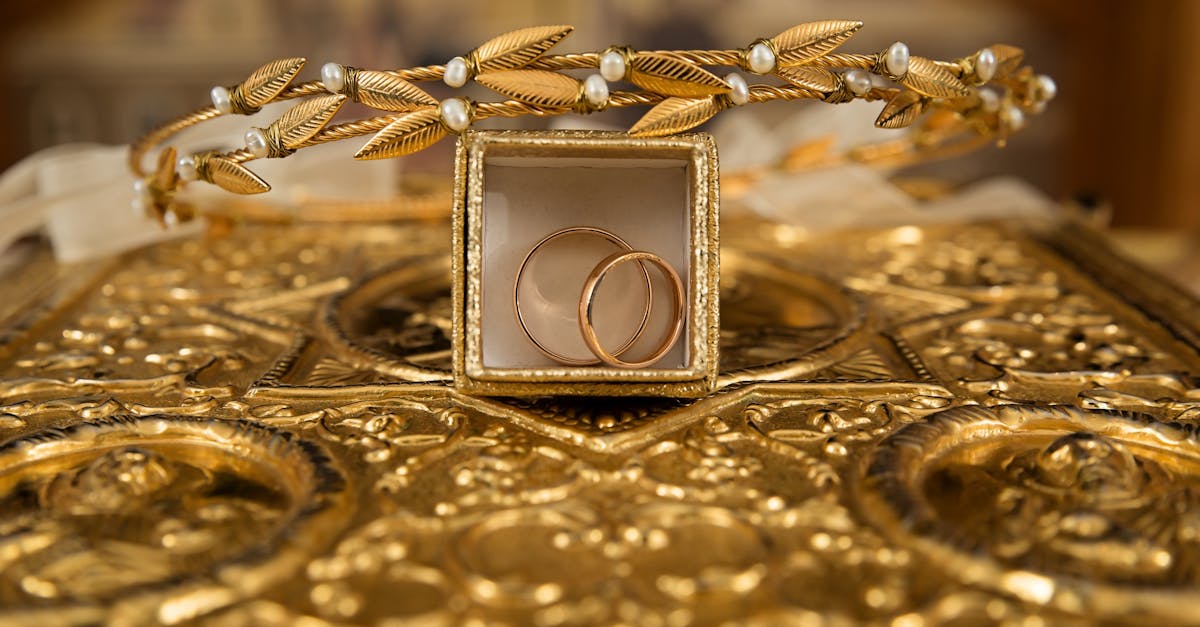The Golden Thread: Exploring the Cultural and Emotional Significance of Gold

Gold: A Tangible Thread in the Tapestry of Culture and Emotion
In the realm of human history, gold has held a captivating allure that transcends its monetary value. Across cultures and civilizations, this precious metal has been woven into the very fabric of our collective consciousness, symbolizing power, wealth, love, and even divinity. Its enduring significance extends beyond mere material worth; gold possesses an emotional weight that has shaped our societies, influenced our decisions, and left an indelible mark on our personal identities.
Prepare to embark on an enlightening journey as we delve into the intricate tapestry of cultural and emotional factors that have intertwined with gold throughout history. From its sacred role in ancient rituals to its enduring appeal as a symbol of love and commitment, gold has played a pivotal role in shaping our perception of the world and our place within it. Join us as we uncover the fascinating connections between culture, emotion, and the enduring allure of gold.
Key Insights
5 Key Insights
- Cultural Significance: Gold holds deep symbolic meaning and has been intricately woven into the traditions, rituals, and beliefs of diverse cultures throughout history.
- Emotional Connections: People often develop strong emotional attachments to gold, associating it with wealth, status, love, and personal identity.
- Cultural Inheritance: Family and community play a significant role in shaping gold buying habits, passing down cultural norms, expectations, and traditions.
- Psychological Factors: Psychological factors, such as emotional security, fear of loss, and the desire for status, can influence gold purchasing decisions.
- Cultural Differences: Gold buying patterns, preferences, and symbolic meanings vary significantly across cultures, reflecting diverse cultural values and beliefs.
1. The Cultural Significance of Gold
Gold has held a captivating allure for humans throughout history, transcending its monetary value to become deeply embedded in our cultures and traditions. Its gleaming beauty and durability have made it a symbol of power, wealth, and divinity across civilizations.
In ancient Egypt, gold was associated with the sun god Ra and was believed to possess divine qualities. Egyptians adorned themselves with gold jewelry and used it to create elaborate artifacts and sculptures, including the iconic funerary masks of pharaohs. In many cultures, gold has been used to create religious objects, from statues of deities to intricate temple ornaments. Its perceived purity and permanence made it an ideal material for items intended for sacred purposes.
Beyond its religious significance, gold has also played a central role in economic and social systems. Its inherent value and scarcity have made it a reliable store of wealth, especially in times of political or economic instability. Gold coins have been used as currency for centuries, and gold reserves continue to be held by governments and central banks around the world as a hedge against inflation and economic downturns.
2. Emotional Connections with Gold

Emotional Connections with Gold: Explore the emotional attachment people often develop towards gold, delving into its association with wealth, status, love, and personal identity.
Our connection to gold goes beyond its monetary value; it often carries a deep emotional significance that is tied to our sense of wealth, status, love, and personal identity. The allure of gold lies not only in its beauty and rarity but also in the emotions it evokes within us.
For many, gold is synonymous with wealth and prosperity. Its value as a precious metal has made it a symbol of financial success and abundance. Owning gold jewelry, coins, or bullion can provide a sense of security and stability, especially during uncertain economic times. Gold’s association with wealth has also made it a popular gift for special occasions, such as weddings and anniversaries, representing wishes for prosperity and a secure future.
Gold also holds emotional significance as a symbol of status and power. Throughout history, gold crowns, scepters, and other royal regalia have been crafted from gold, signifying the authority and prestige of those who wore them. In modern times, gold jewelry and accessories continue to be associated with success, sophistication, and a certain level of exclusivity. Wearing gold can boost our self-confidence and make us feel more assertive and powerful.
3. Gold as a Cultural Inheritance
Our gold buying habits are often influenced by the cultural norms and expectations passed down through our families and communities. In many cultures, gold is seen as a valuable asset that is passed down from generation to generation. Gold jewelry, coins, and other items are often given as gifts for special occasions, such as weddings, birthdays, and religious holidays. Receiving gold from loved ones can create a sense of belonging and connection to our cultural heritage.
Cultural expectations can also influence our personal preferences for gold. In some cultures, it is considered important to own a certain amount of gold, especially for women. Gold jewelry is often seen as a symbol of wealth, status, and beauty. Wearing gold can be a way to express our cultural identity and connect with our ancestors.
In some communities, there are specific traditions and rituals surrounding the purchase and use of gold. For example, in some Indian cultures, gold is considered auspicious and is often bought during festivals and weddings. The gifting of gold jewelry to brides is a common practice, symbolizing prosperity and good fortune in the marriage.
4. Psychological Factors Influencing Gold Purchases

Psychological Factors Influencing Gold Purchases: Analyze the psychological factors that drive gold buying behavior, including emotional security, fear of loss, and the desire for status and social recognition.
Our decisions to buy gold are often driven by a complex interplay of psychological factors. These factors can include our need for emotional security, our fear of loss, and our desire for status and social recognition.
For many people, gold represents a sense of security and stability in an uncertain world. Owning physical gold can provide a feeling of comfort and peace of mind, especially during times of economic or political instability. Gold is seen as a safe haven asset that can protect our wealth from inflation and other financial risks.
Fear of loss can also be a motivator for gold purchases. Some people buy gold as a way to protect their savings from potential losses in the stock market or other investments. Gold is perceived as a relatively safe investment that is likely to retain its value even in times of economic downturn.
Finally, the desire for status and social recognition can also drive gold buying behavior. In many cultures, gold jewelry and other gold items are seen as symbols of wealth, success, and power. Wearing gold can boost our self-confidence and make us feel more accepted and respected by others.
5. Cultural Differences in Gold Buying Patterns
Gold buying habits vary significantly across different cultures, reflecting the diverse cultural norms, values, and beliefs that shape our relationship with this precious metal. In some cultures, gold is highly valued and is seen as a symbol of wealth, status, and power. In other cultures, gold is seen as a more modest investment or is primarily used for religious or ornamental purposes.
In India, for example, gold is deeply embedded in the cultural fabric and is considered a highly auspicious metal. Gold jewelry is a common sight at weddings and other special occasions, and many Indian families invest a significant portion of their savings in gold. In contrast, in some Western cultures, gold is seen as a more traditional investment and is often purchased as a hedge against inflation or economic uncertainty.
The motivations for buying gold also vary across cultures. In some cultures, gold is seen as a safe haven asset that can protect wealth from financial risks. In other cultures, gold is purchased primarily for its aesthetic value or as a form of personal adornment. The symbolic meanings associated with gold also differ from culture to culture. In some cultures, gold is associated with purity, divinity, or good luck. In other cultures, gold is seen as a symbol of wealth and material success.
6. Marketing to Cultural and Emotional Factors
Marketing to Cultural and Emotional Factors: Provide insights for businesses on how to effectively market gold products by understanding and leveraging the cultural and emotional factors that influence consumer behavior.
To effectively market gold products, businesses need to understand and leverage the cultural and emotional factors that influence consumer behavior. This means understanding the different cultural norms, values, and beliefs that shape people’s relationship with gold, as well as the emotional motivations that drive gold purchases.
One way to do this is to conduct market research to identify the specific cultural and emotional factors that are most relevant to their target audience. This research can help businesses develop marketing campaigns that are tailored to the specific needs and desires of their customers.
For example, a jewelry company that is targeting the Indian market might emphasize the cultural significance of gold in Indian weddings and festivals. They might also use imagery and language that appeals to the emotional desire for wealth, status, and good luck that is associated with gold in Indian culture.
7. Ethical Considerations in Gold Marketing
Ethical Considerations in Gold Marketing: Discuss the ethical implications of marketing gold products that appeal to cultural and emotional triggers, emphasizing the need for responsible and respectful advertising practices.
While it is important for businesses to understand and leverage the cultural and emotional factors that influence gold buying behavior, it is also important to do so in a responsible and ethical manner. This means avoiding marketing practices that are misleading, deceptive, or that exploit consumers’ emotions.
One ethical consideration is the need to avoid perpetuating harmful stereotypes or generalizations about different cultures. For example, a marketing campaign that suggests that all Indian people love gold jewelry could be seen as stereotypical and offensive. It is important to remember that people within any culture are diverse and have their own unique preferences and motivations.
Another ethical consideration is the need to be transparent about the sourcing and sustainability of gold products. Consumers are increasingly interested in knowing where their gold comes from and how it was mined. Businesses should be transparent about their supply chains and ensure that their gold products are ethically sourced and produced.
Quiz: Test Your Understanding
- True or False: Gold has been valued and used across cultures throughout history.
- What is a primary reason why people develop emotional connections with gold?
- How can family and community influence gold buying habits?
- Which psychological factor often drives people to purchase gold as a safe investment?
- How do cultural differences impact the symbolic meanings associated with gold?
Answer Key:
- True
- Its association with wealth, status, love, and personal identity
- By passing down cultural norms, expectations, and traditions
- Fear of loss
- Gold can symbolize purity in one culture and wealth in another
Key Insights
Table of Key Insights
| Key Insight | Explanation | |—|—| | Cultural Significance | Gold holds deep symbolic meaning and has been intricately woven into the traditions, rituals, and beliefs of diverse cultures throughout history. | | Emotional Connections | People often develop strong emotional attachments to gold, associating it with wealth, status, love, and personal identity. | | Cultural Inheritance | Family and community play a significant role in shaping gold buying habits, passing down cultural norms, expectations, and traditions. | | Psychological Factors | Psychological factors, such as emotional security, fear of loss, and the desire for status, can influence gold purchasing decisions. | | Cultural Differences | Gold buying patterns, preferences, and symbolic meanings vary significantly across cultures, reflecting diverse cultural values and beliefs. |